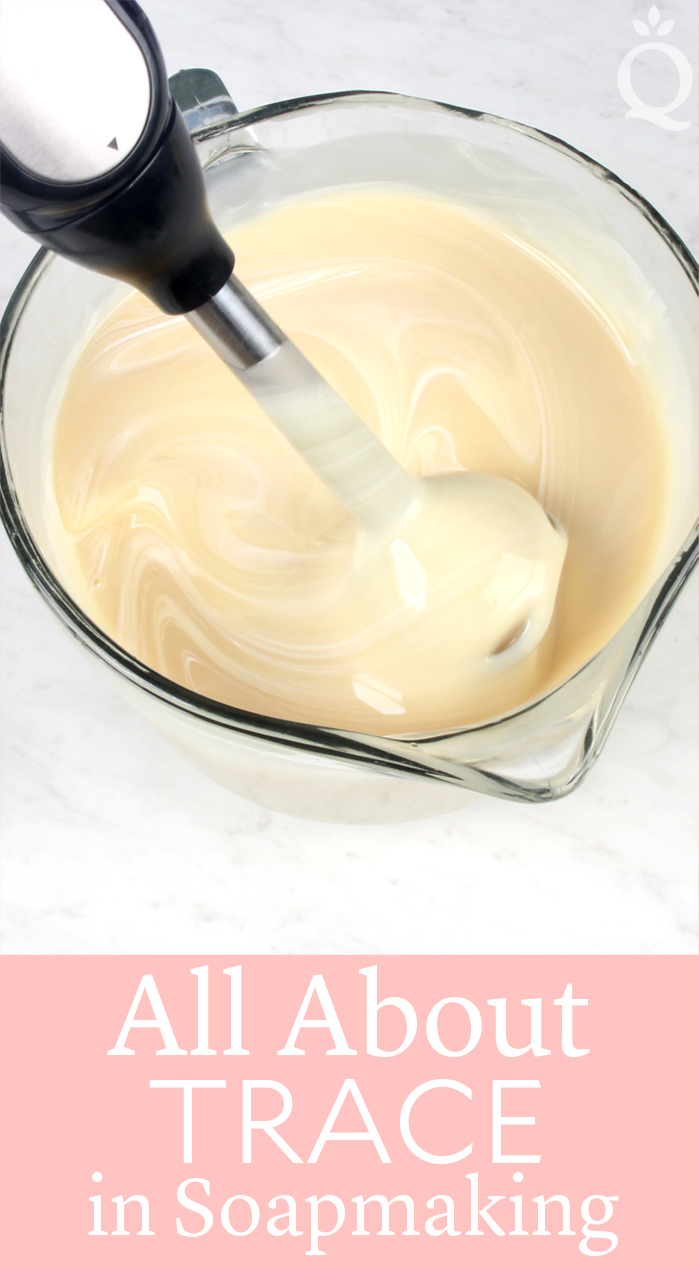
If you’re a cold process soaper, you’ve heard the term “trace.” Simply put, “trace” refers to the point in soapmaking when the lye water and oils have emulsified and won’t separate. There are different types of trace, including thin and thick trace, which refer to the consistency of the soap.
The concept of trace can be difficult to understand when you’re a beginner. The best way to understand trace is to make soap! After a few batches, you’ll easily be able to differentiate between thin, medium, and thick trace. Once you understand what trace is, you can experiment with manipulating trace with your recipe, your stick blender, and with heat. Learn more in this post, including tips on how to achieve different types of trace.
The video also demonstrates “false trace,” which refers to soap batter that looks like it has emulsified but actually hasn’t. False trace is usually the result of cooler temperatures. Learn more about false trace here, including how to avoid it and how to fix it if it happens to your batch.
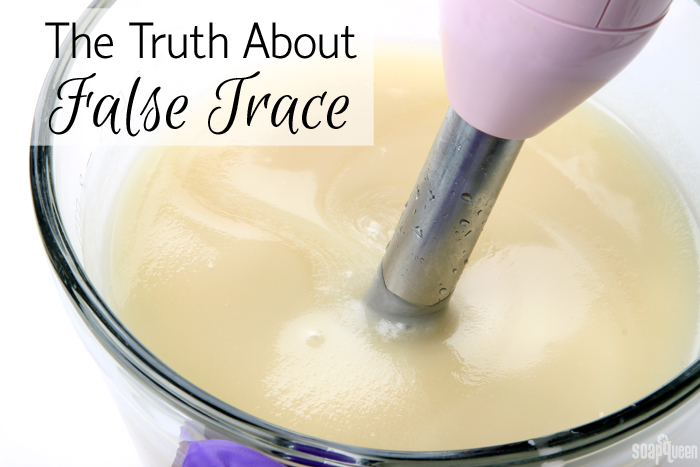
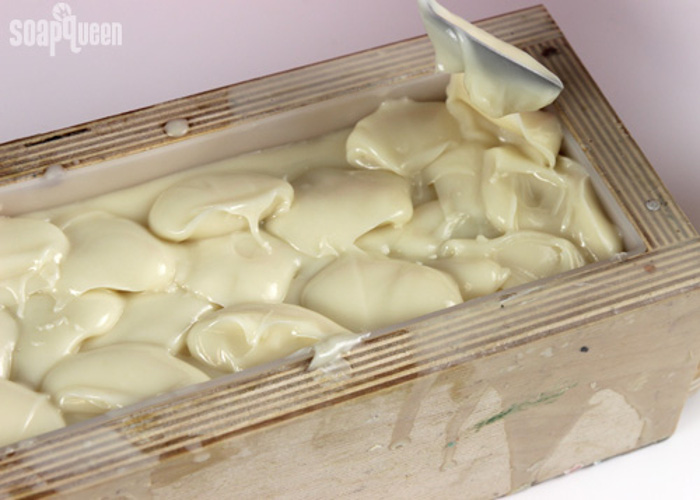 False trace looks like thick trace, but the soap hasn’t fully emulsified.
False trace looks like thick trace, but the soap hasn’t fully emulsified.
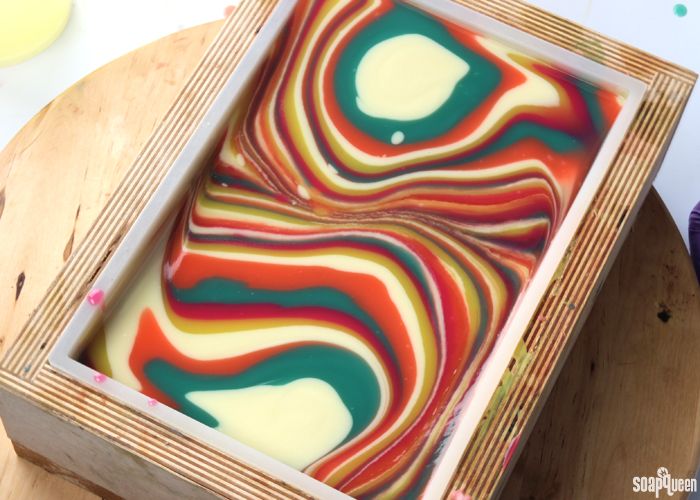
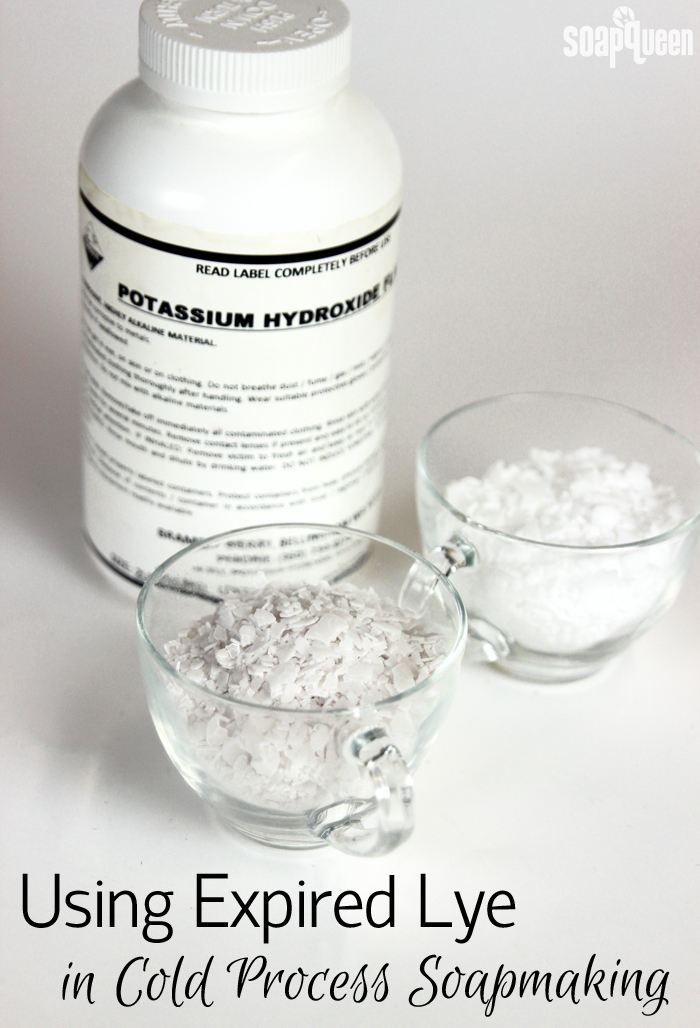
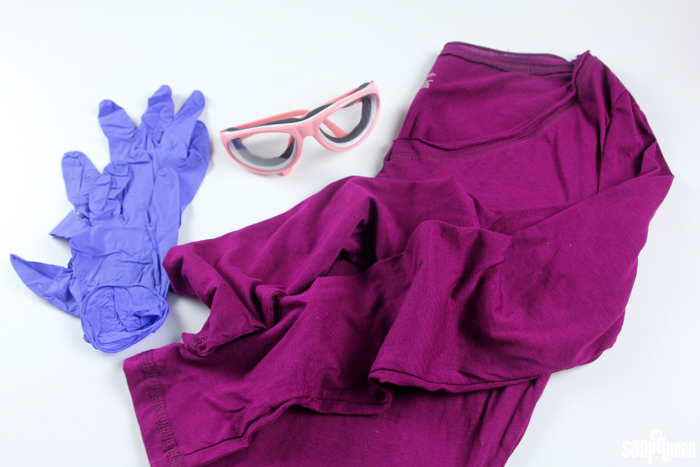 Working with lye requires safety gear like
Working with lye requires safety gear like 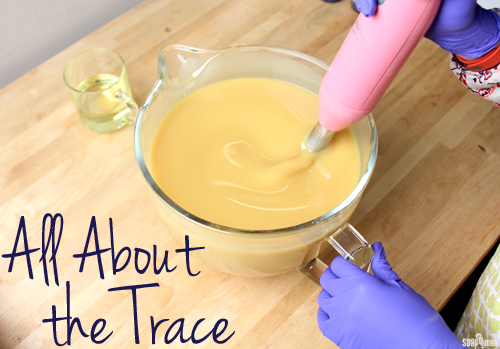
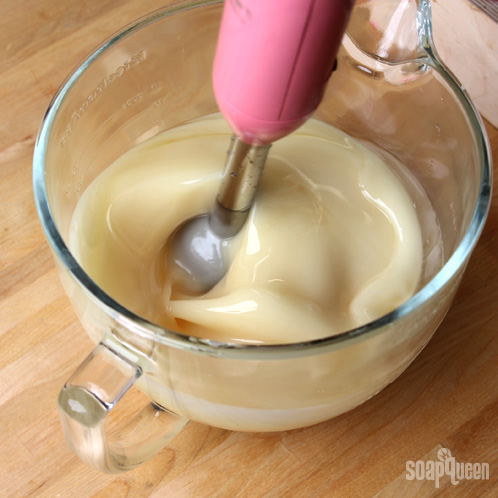 Notice the streaks of oil in the photos below? These mixtures have not reached trace, because they are not thoroughly mixed. Some of the oils have not yet started saponification, and the mixture is not completely emulsified. These mixtures need more stirring and stick blending to reach trace. If the soap was poured into the mold at this point, the soap would not properly set up. There may also be pockets of unsaponified oil and lye in your soap, which may cause skin irritation.
Notice the streaks of oil in the photos below? These mixtures have not reached trace, because they are not thoroughly mixed. Some of the oils have not yet started saponification, and the mixture is not completely emulsified. These mixtures need more stirring and stick blending to reach trace. If the soap was poured into the mold at this point, the soap would not properly set up. There may also be pockets of unsaponified oil and lye in your soap, which may cause skin irritation.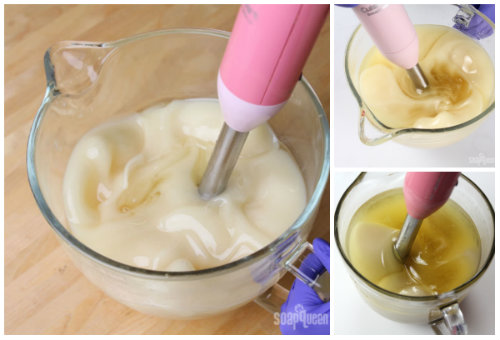

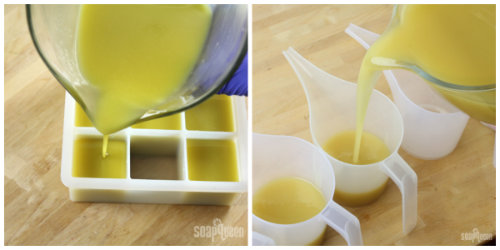
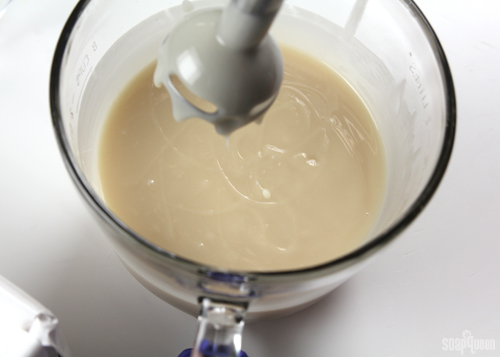
 Adding poppy seeds into medium trace soap keeps them evenly suspended throughout the batter.
Adding poppy seeds into medium trace soap keeps them evenly suspended throughout the batter.

 Making cold process soap for the first time can be intimidating. With so many recipes and options it can be difficult to find a good place to start. The
Making cold process soap for the first time can be intimidating. With so many recipes and options it can be difficult to find a good place to start. The